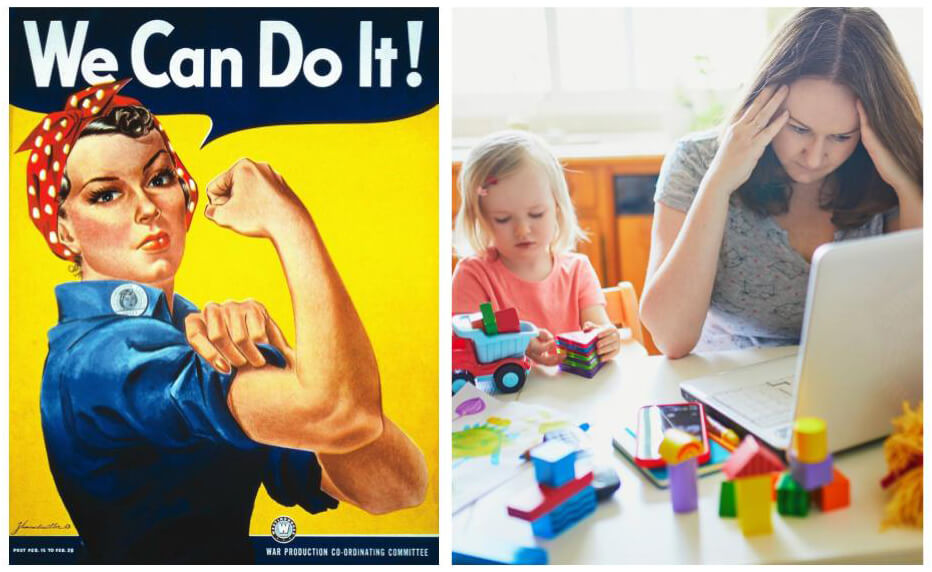
It’s December 7, 1944 – the third anniversary of the attack on Pearl Harbor. The U.S. is still fighting World War II and, yet, Macy’s department store in New York City rings up its biggest sales day ever!
Sure, the end of the war is in sight. But some of the largest and bloodiest battles were still to come. The Battles of the Bulge and Okinawa would kill over 30,000 U.S. soldiers. Yet people at home are shopping like crazy. They really wanted to get back to normal.
Looking at other times in history when society and business went through traumatic transitions is a useful way to anticipate how things could evolve as the Covid-19 pandemic winds down. One example is the end of World War II (1945-46) when the U.S. changed quickly from an economy geared to all-out production of war materials back to a peace time consumer-driven economy.
Even as we suffer through another surge in Covid-19 cases, the end of the pandemic is in sight, as promising vaccines are rolled out. But this is going to take longer than we’d like. And there is incredible uncertainty about what this transition back to a “new normal” will mean for your business and your workforce.
Here are four insights that can help you make better decisions about your workforce, while coping with the uncertainties of the next year.
1. Will you prosper or suffer?
When the end of World War II became inevitable, U.S. leaders had to begin thinking about the post-war economy even though fighting remained intense. Even when people are suffering, life moves on once society sees an end in sight.
Some bad Covid-19 surges may be inevitable, but you need to be thinking about your post-Covid workforce, even if you’re still facing disruptions from the pandemic. Expect the tension to be there as public health and business goals compete. Assume there will be conflicts between resolving the short term pain of the pandemic and the longer term workforce needs for economic recovery and growth.
People will still be dying of Covid-19 even as the economy is slowly opening up. We have to learn to live with these contradictions.
2. Please pass the Prozac: dealing with post pandemic PTSD
Many of the 12 million war veterans leaving military service in 1945 needed time to heal from psychological, as well as physical, wounds left by the war. Some suffered from post traumatic stress that manifested as anxiety, depression and alcoholism.
Today, some employees, particularly “essential workers” and those on the front lines of healthcare, will need to heal psychological wounds created by the stress of working face-to-face with the pandemic. This emotional toll is evident in the proliferation of anti-anxiety medications prescriptions that increased 34% last March when the pandemic started.
A byproduct of prolonged work stress will also be premature retirements (and resulting capabilities lost) from burned out nurses, doctors, public health officials and veteran workers in other fields. So leaders should not only be thinking about the increased demand for mental health services. They also need to anticipate how the pandemic will impact their talent pipeline long term.
Finally, one of the things that helped veterans returning from service in World War II was that they were continually treated as heroes when they transitioned to civilian life. The risks they took were continually recognized by society.
During this pandemic, there has been a lot of praise for “essential workers.” But have these employees achieved new levels of respect, or will they be forgotten as low-pay, low-skill workers, once society no longer sees their important work as risky? Will your employees feel a renewed – and ongoing — sense of appreciation from management?
3. What if Rosie the Riveter couldn’t find day care?
Millions of women joined the U.S. workforce during World War II because they were needed to fill jobs in industry usually held by men who went off to fight. Although surveys showed most women wanted to stay employed after the war, they were encouraged to leave their jobs when the war ended. Some 5 million women were laid off in 1945 to open up jobs for servicemen returning from overseas. Women who wanted to continue working often had to settle for low-paying jobs as waitresses and sales clerks.
In the U.S. today, women are paying a huge price for the Covid-19 disruption. The biggest impact on the workforce may be the number of women forced out of the labor pool by the loss of childcare options. The problem has been well documented as up to 2 million working mothers are considering leaving the workforce or downshifting their careers, according to a recent McKinsey study. More than 800,000 women already left the workforce this fall.
This is a disaster that hasn’t yet been quantified in economic terms! It’s a major talent drain on the workforce pipeline in an era where women have become central players on leadership teams and in many highly-skilled roles.
Any organization that wants to minimize its own talent losses and sustain a viable pipeline of young talent must find innovative ways to support working mothers in balancing the demands of work and family life. Rebuilding child care options is going to be central to any solution. In the meantime, organizations that can provide alternative child care solutions or at least demonstrate maximum flexibility to support working mothers will have a strong advantage in recruiting and retaining talented women.
4. The year of lost learning…How to reload the talent pipeline
In 1944, Congress passed what became known as the GI Bill, which offered returning veterans money for education and low-interest loans for new businesses and home purchases. (Of course, African Americans were unconscionably denied these benefits, but that’s another story.) Almost eight million veterans took advantage of the bill’s training and education benefits, which qualified them for higher paying jobs that had all kinds of positive ripple effects for the economy. Imagine if those veterans had just been expected to drift back into the changing economy. Labor productivity would have been much lower!
The current pandemic has contributed to new educational gaps. Except for some highly innovative programs, the concept of work-based learning for high school and college students has ground to a halt, for example. We have lost at least a year of pre-employment learning (internships, apprenticeships, plant tours, etc.) to the pandemic, as employers and schools dramatically curtailed on-site programs. And the work-oriented programs of many community college students have been disrupted.
How will you make this up in your business and community? Increase the number of internships, as soon as it is deemed safe? Double down on career awareness programs once schools will participate? Invest in more online initiatives to educate potential employees about opportunities in your business? Find ways to invest in community college students to accelerate the completion of their training?
High impact initiatives will require collaborative regional solutions involving individual employers, chambers of commerce, schools, and local work force development organizations to come up with more innovative approaches for developing your future workforce.
History lessons for success in post-pandemic life
The transition out of the Covid-19 pandemic will be a great relief, but it is also going to create its own set of management challenges:
- Expect tension between those still suffering and society’s pent-up desire to move on.
- Recognize some employees will need time and resources to recover psychologically from working through the pandemic. Plan to invest in mental health resources that will be needed and expect premature retirements.
- Confront the child care crisis head on. We can’t afford to lose the capabilities and experience of working parents. Be proactive in looking for innovative solutions.
- And take a different look at workforce development initiatives. Covid-19 has created work-based learning challenges that didn’t previously exist. Now is the time to be investing in really innovative solutions.
While 2020 was a nightmare, you’ve also never experienced a transition like the one we’re going to have in 2021. But that doesn’t mean similar things haven’t happened in the past. We can learn from periods like the end of World War II to better prepare for the challenges we face in the next year. And be inspired by knowing that the country came through that transition stronger than ever!
Check out the video version of this post:
And for more detailed insights on the changing workforce in the Covid-19 recession, as well as actionable steps you can take today to meet the workforce challenges you’re facing, go to my website at SmartWorkforceStrategies.com and check out my blog there. Or contact me to explore how one of my customized virtual programs can energize and educate your audience.
